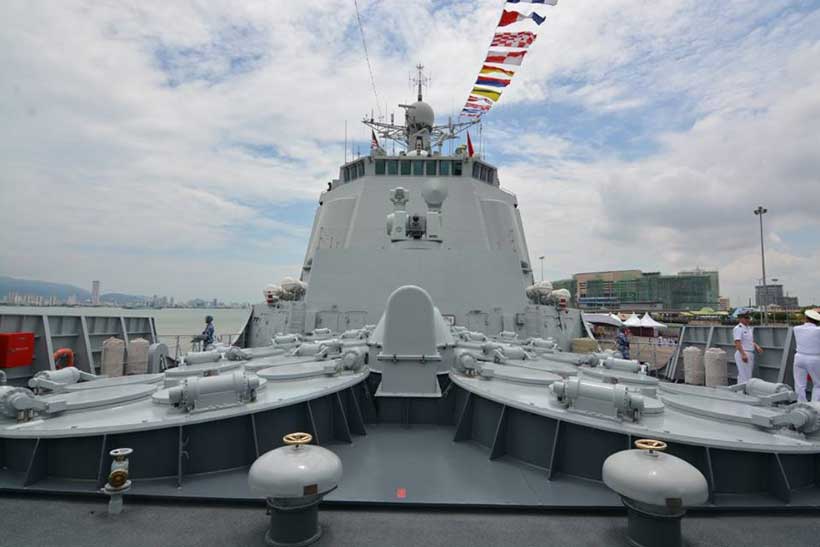China’s Naval Ambitions: A Paper Tiger?

China’s People’s Liberation Army Navy (PLAN) has undergone a remarkable transformation in recent decades. It has become the largest navy in the world by vessel count. However, this impressive growth raises questions about its actual capabilities. Size alone does not guarantee effectiveness. The PLAN faces significant challenges, including a lack of combat experience, unreliable technology, and questionable global trustworthiness. These vulnerabilities reveal that, despite its ambitions, China’s naval power projection may be more of a facade than a formidable force.
Lack of Naval Combat Experience
One of the most significant weaknesses of the PLAN is its lack of real-world combat experience. Unlike the United States Navy and other QUAD navies, which have participated in numerous conflicts and joint operations, the PLAN has not engaged in significant combat since the 1979 Sino-Vietnamese War. Modern naval warfare requires operational expertise in complex scenarios, such as high-intensity conflicts, amphibious assaults, and carrier strike group coordination. Unfortunately, PLAN personnel remain largely untested in these critical areas.
China’s naval drills in the South China Sea often resemble choreographed exercises rather than realistic combat simulations. For instance, during a joint exercise with Russia in 2021, the PLAN struggled to synchronize operations with its ally. This incident highlighted gaps in interoperability and command efficiency. Additionally, the PLAN’s attempts to develop effective carrier-based operations have been hampered by inexperience. The Liaoning and Shandong, China’s two aircraft carriers, are still in the early stages of developing their carrier strike capabilities.
Recent reports further amplify these concerns. In August 2023, unconfirmed accounts suggested that a Type 093 nuclear-powered submarine experienced a catastrophic failure in the Yellow Sea. Allegedly, it became entangled in underwater defenses, leading to fatal outcomes for its crew. While Beijing denied these claims, the incident underscored potential deficiencies in operational readiness and safety protocols. Furthermore, PLAN vessels involved in anti-piracy missions in the Gulf of Aden have been criticized for their excessive reliance on allied forces for logistical and operational support. In contrast, Indian and U.S. vessels operate independently with greater coordination and effectiveness.
Unreliable Weapon Technology
Another critical issue facing the PLAN is the reliability of its indigenous weapons systems. Many of these systems often fall short of their advertised performance. For example, the much-touted Type 055 destroyers, equipped with advanced radar and missile systems, have been reported to experience frequent malfunctions during testing. In 2020, one Type 055 destroyer faced propulsion issues during its maiden deployment, forcing it to return to port prematurely.
The recent mishap involving China’s newest nuclear submarine during construction in Wuhan further highlights these concerns. The vessel sank at the shipyard, revealing critical gaps in quality control and project oversight. This incident has delayed China’s efforts to modernize its underwater fleet. Additionally, Chinese anti-ship missiles, such as the DF-21D “carrier killer,” have yet to be proven in real-world scenarios. Experts have raised doubts about their reliability against advanced countermeasures deployed by adversaries.
Reports from export partners also indicate systemic issues. For instance, Algeria’s purchase of Chinese corvettes in 2019 revealed that onboard sensors and weapons systems frequently malfunctioned in harsh maritime conditions. This has forced the Algerian Navy to seek upgrades and maintenance from third-party suppliers, significantly increasing operational costs. These reliability issues not only undermine the PLAN’s credibility but also raise concerns about the effectiveness of its exports.
Exporting Substandard Equipment to IOR Nations
China’s strategy to expand its influence in the Indian Ocean Region (IOR) involves supplying naval equipment to smaller nations. However, these exports often come with hidden costs, including substandard quality and limited operational lifespans. For example, Bangladesh’s purchase of two Ming-class submarines in 2017 quickly revealed that these assets were outdated and required high maintenance, rendering them liabilities rather than assets.
Sri Lanka’s experience with Chinese-built frigates further illustrates this issue. The P625 frigate, gifted by China in 2019, faced frequent breakdowns due to poor manufacturing standards. Such incidents erode the trust of recipient nations and tarnish China’s reputation as a reliable defense partner. In another case, Thailand’s purchase of Yuan-class submarines was delayed indefinitely in 2022 when Germany refused to supply key propulsion components due to export restrictions. This situation exposed China’s reliance on foreign suppliers for critical technologies, further discrediting its ability to deliver self-reliant solutions.
China’s arms sales are designed to foster dependence rather than self-reliance. Unlike Western and leading Southeast Asian defense suppliers, which often include technology transfer agreements, Chinese exports are delivered as end-products with minimal post-sale support. This strategy limits the operational flexibility of recipient nations and forces them to rely on Chinese technicians for repairs and upgrades. As nations in the IOR and beyond reassess their strategic partnerships, the PLAN’s vulnerabilities become increasingly apparent, revealing that its naval might may be more of a facade than a formidable force.
